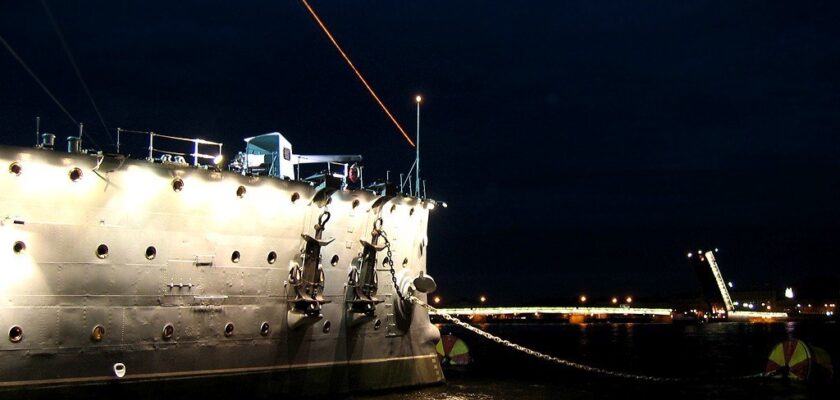Cruiser Aurora
Cruiser Aurora is interesting both as one of the world’s oldest surviving steam warships and as a witness and participant of the revolutionary events of 1917. This powerful and for its time fast ship was built at the St. Petersburg shipyard “New Admiralty” in 1900. The Aurora soon took part in the Russo-Japanese War, particularly in the famous Battle of Tsushima. In this hardest sea battle many sailors and officers of the ship were killed and wounded, its captain was also killed. But still the crew managed to take the wounded ship out of the encirclement and bring it home, where it was thoroughly repaired.
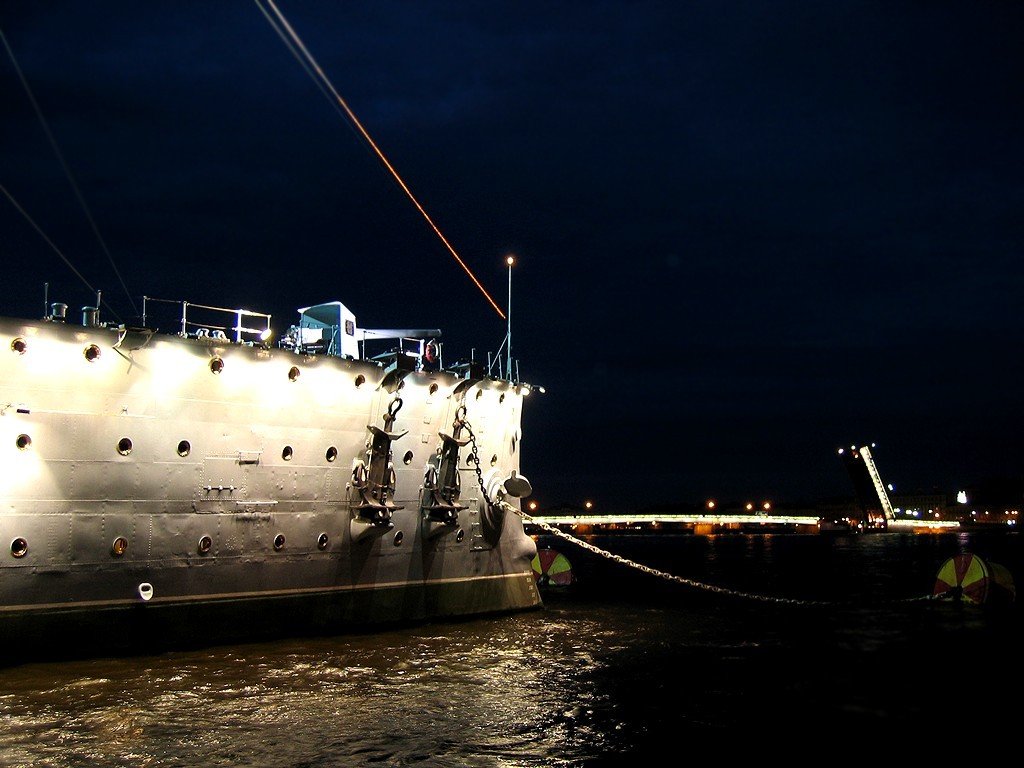
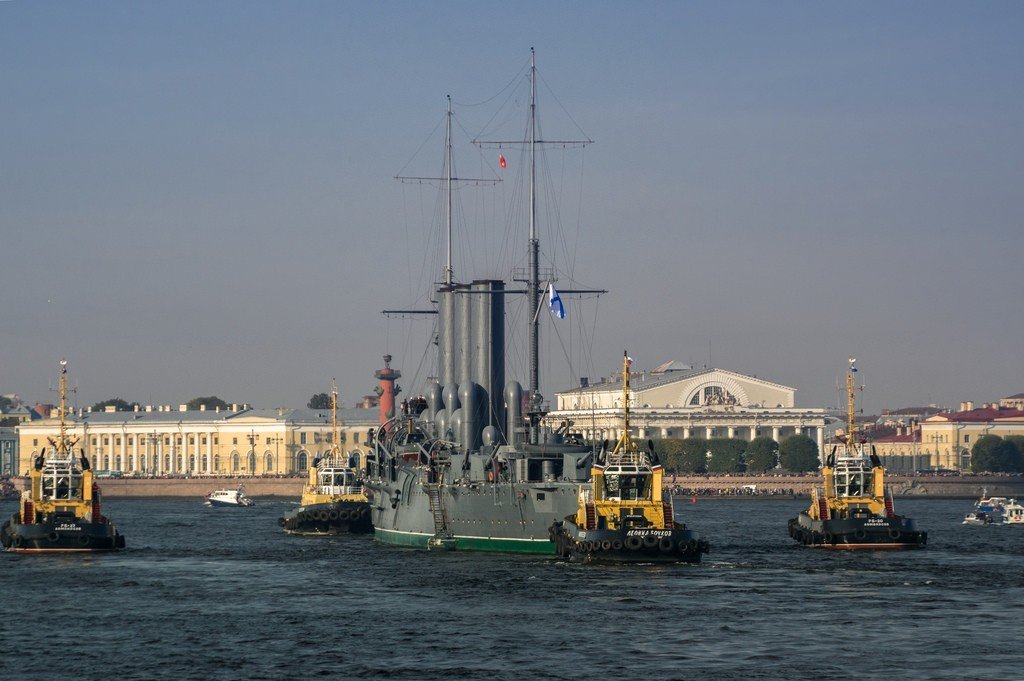
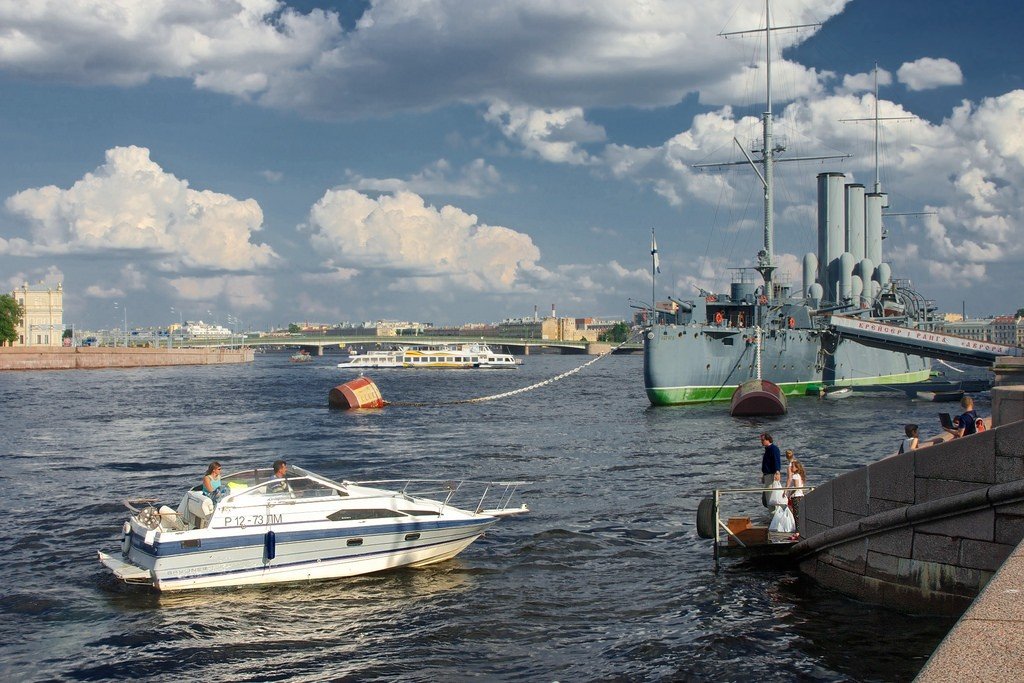
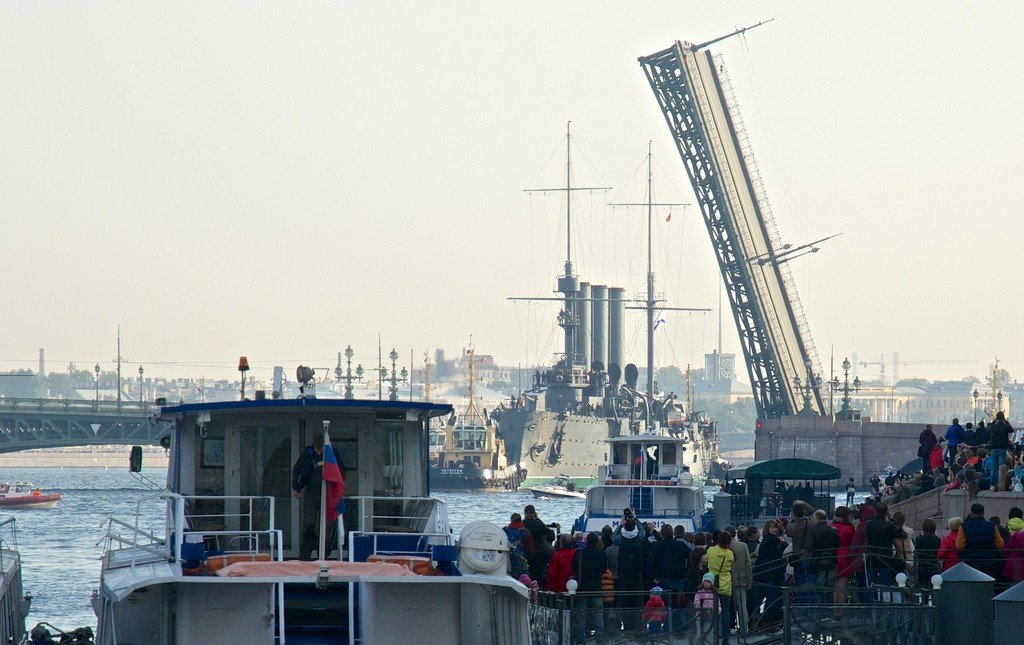
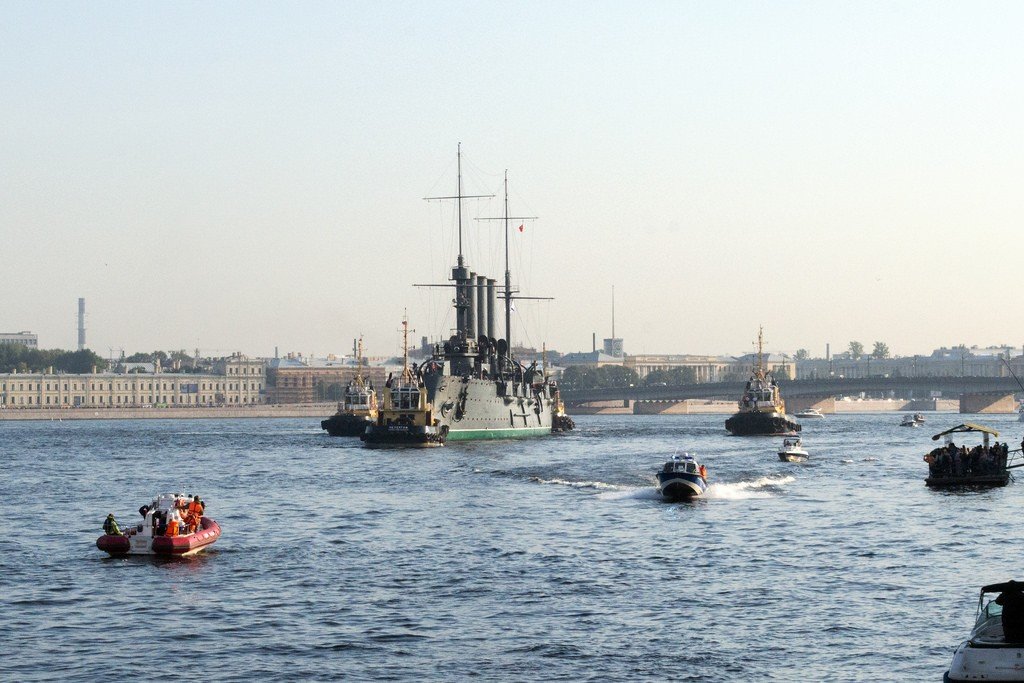
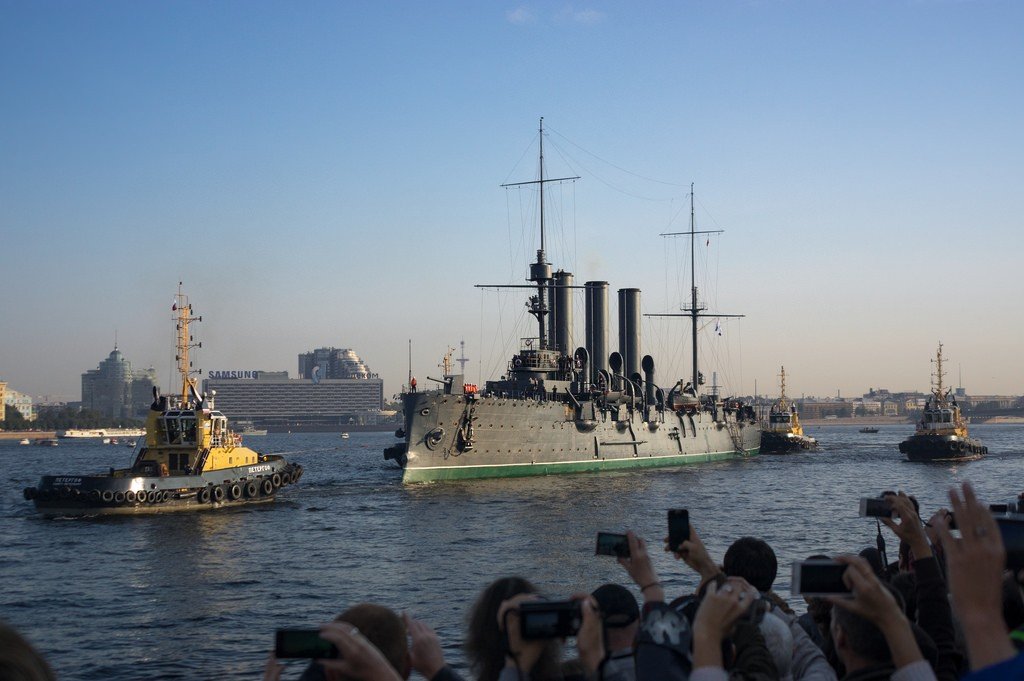
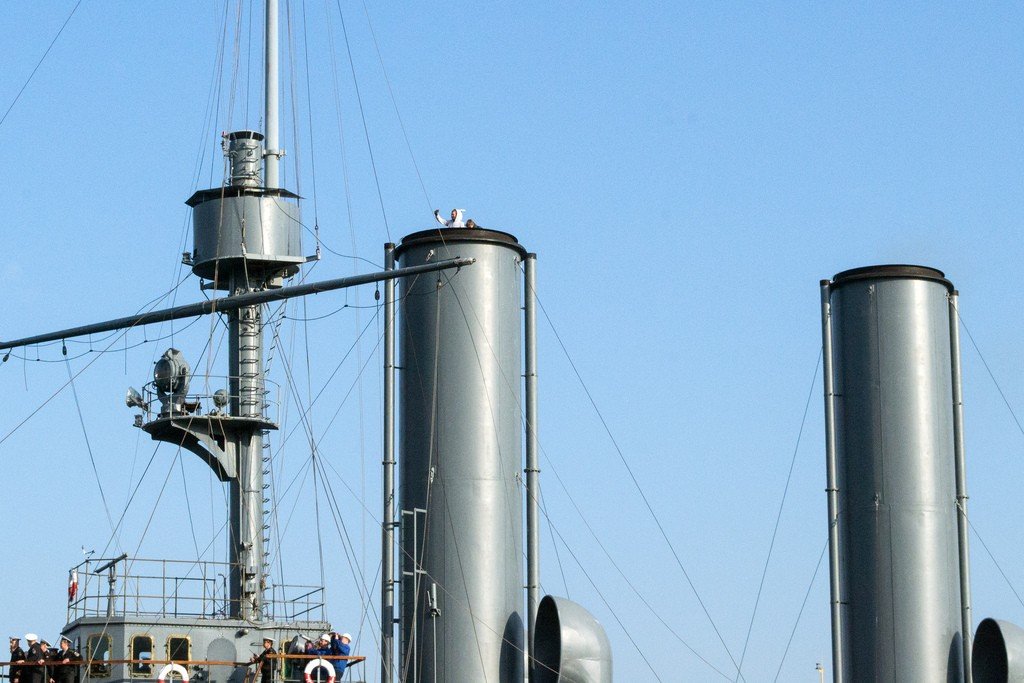
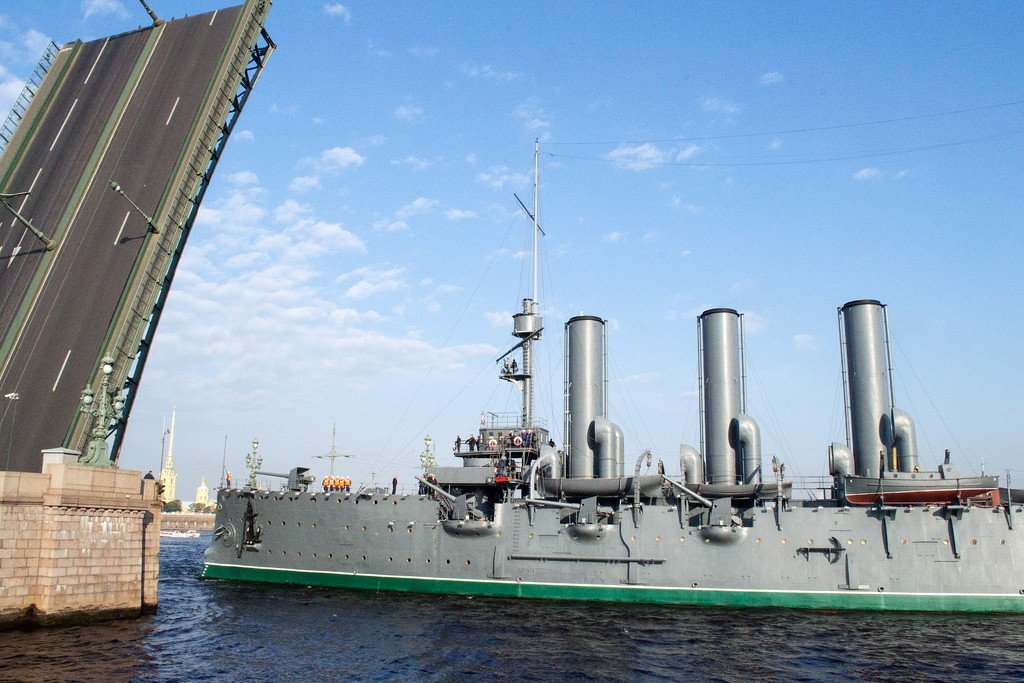
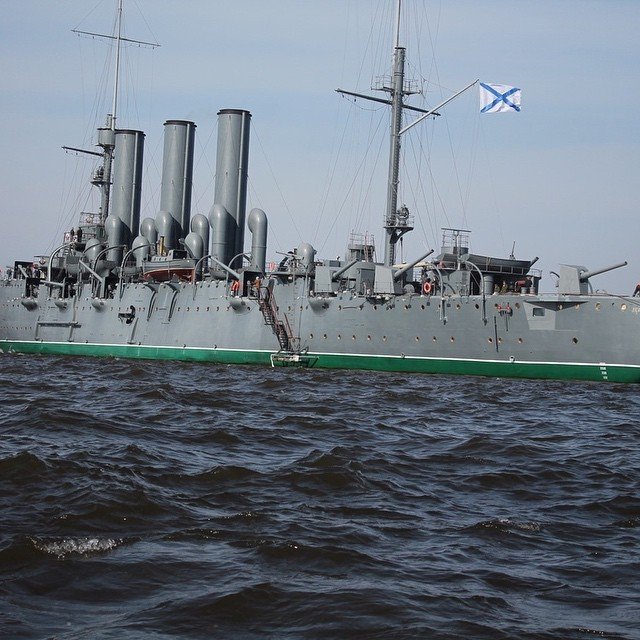
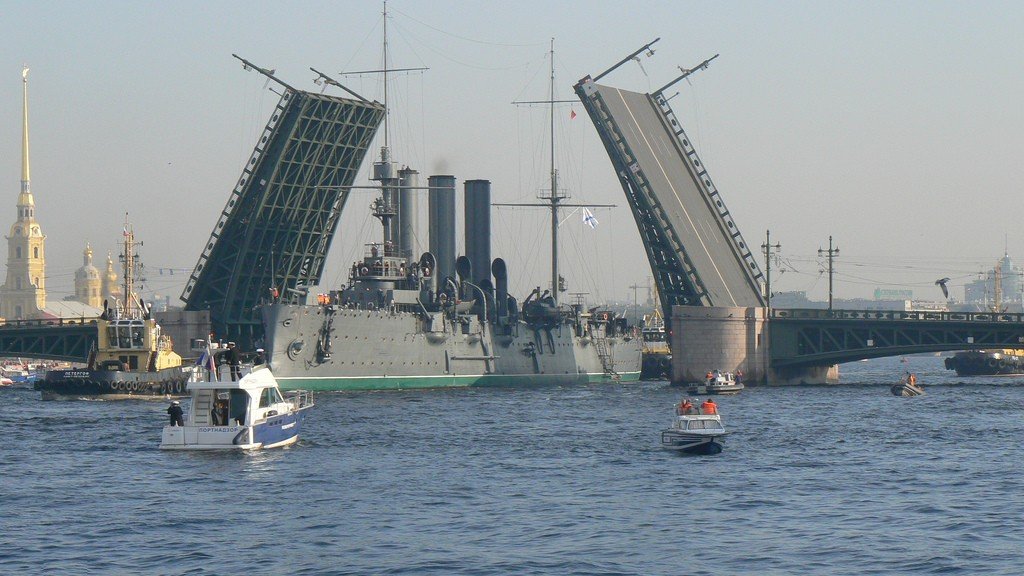
General information
Upon her return to the Baltic Sea, the Aurora was used as a training ship, where midshipmen of the Naval Corps underwent shipboard practice. During World War I, the cruiser took an active part in the fighting in the Baltic. In 1916 it was again put for repair in Petrograd. Close communication of the crew with the workers of the shipyard where the ship was located, led to the fact that the sailors were quickly revolutionized.
.
In February 1917, the sailors of the Aurora defected to the revolution, took over the ship and were the first in the Baltic to raise the red flag. On the night of October 25, by order of the Military Revolutionary Committee, the ship anchored near St. Nicholas Bridge and fired a blank shot from the bow gun gave the signal to storm the Winter Palace – the last stronghold of the Provisional Government. No other gunshot in history has had such significant consequences.
.
Under Soviet rule, the Aurora once again became a training ship, it was used by cadets of naval schools. During the war, its crew took part in the defense of Leningrad. The ship itself was badly damaged. After repairs, it was put on eternal anchorage near Petrogradskaya Embankment and turned into a museum.
.
In the former sailors’ cabins arranged an exhibition telling about the history of the ship. To get there, you have to go down the steep stairs in the bow of the ship. It is interesting to see how the cruiser’s sailors lived, slept, ate and prayed in the pre-revolutionary era. In the second hall, pay attention to the portrait of the commander of the ship, killed in the Battle of Tsushima. The frame for the portrait is made of a piece of the ship’s armor, pierced by a shell fragment. The museum has a lot of photos and documents telling about the participation of the Aurora in the most important historical events of the XX century. The last room exhibits many gifts made to the museum by all sorts of delegations during the Soviet era.
.
The main attraction of the ship is the gun on the upper deck, which fired the historic shot. On it hangs a plaque, and there are always many visitors around, taking pictures against its background. By the way, from here there is just a stunning view of the Neva.
.Be sure to look in the radio room located under the bow bridge, through which the military orders of the Military Revolutionary Committee were transmitted. It also transmitted Lenin’s proclamation “To the Citizens of Russia”, from which the whole world learned about the victory of the proletarian revolution.
.
Visitors
- Address: Petrogradskaya Nab. Metro “Gorkovskaya” .
- Website: aurora.org.ru .
- Tel: (812) 303-85-13. .
- Open daily, except Mon and Tues, from 11:00 to 18:00. The ticket office closes at 17:15. .
- To see the cruiser can be independently (by ticket), or as part of a tour. The cost of tickets for citizens of the Russian Federation and CIS countries – 400 rubles. for adults, 200 rubles. for students, schoolchildren, pensioners. For foreigners – 600 rubles, preferential category – 400 rubles. The cost of excursions – 400 rubles. in Russian, 500 rubles. in English + will need to buy a ticket.
